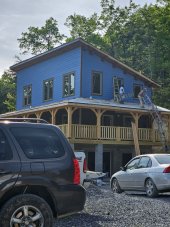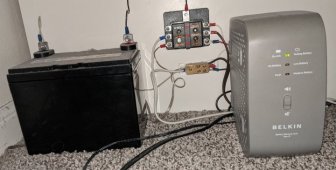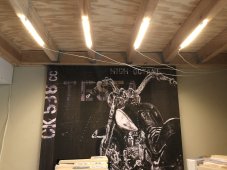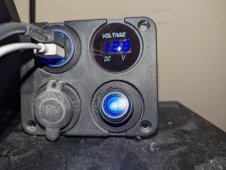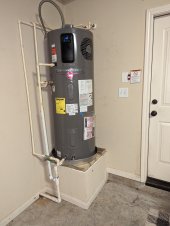As a beginner and soon an owner of a house, I've spend last week watching Will's videos and generally reading about DIY solar power and electronics. Even my field (IT) is within the technology I didn't know a lot of things about electronics (and still don't). The main part I was missing is the huge amount of power loses/dissipation that we currently have. Those are mainly coming from
If we exclude Solar Cells and cables that makes 0,9 * 0,95 * 0,85 * 0,8 = ~58% efficiency!
As an off-grid solar green energy dreamer I want to design a more efficient solution for my future home. Even if not possible to use it initially to be able to work in the future. All devices nowadays seem to (actually) work with DC instead of their AC inputs. Which means that they have an internal or an external (probably cheap/low efficient) converter. Ideally, we can use our DC source power directly (no inverter) to those devices without the need to convert from DC to AC and again AC to DC (at least for those with an external adaptor). The problem in this scenario is that each device uses different voltages. But we can still have a DC 48v bus and high efficiency buck converters to support all the main required voltages (such as 3.3, 5, 12, 19.5, 24 etc.). The advantage of this it would be having a single buck converter (for each common voltage) for all the devices and you just need to replace that with something new (e.g., GaN technology) to increase efficiency. USB-C would be another good solution however the device should support the communication protocol.
(What is not clear for me is the load that a DC buck converter can handle - e.g., ATX PSU 500W - and how you can make those converters to be able to handle high currents e.g., 3 PC power supplies x 500W)
Sorry for the long post and for my possible wrong calculations (forgive a beginner). Hopefully you will find it interesting too and contribute your thoughts!
Related: SMART DC/DC WALL PLUG DESIGN FOR THE DC HOUSE PROJECT
- Cables (Cheap/Undersized/Long/High-Resistance)
- Circuits (Cheap parts/Bad design)
- Power Supplies / Converters
Note: Manufactures will usually claim max efficiency not averageSolar Panels (~20%) -> MPPT Charger (~90%) -> Battery Charge/Discharge (~95%) -> Inverter (~85%?) -> Power Supply (~80%) -> Load/Device
If we exclude Solar Cells and cables that makes 0,9 * 0,95 * 0,85 * 0,8 = ~58% efficiency!
As an off-grid solar green energy dreamer I want to design a more efficient solution for my future home. Even if not possible to use it initially to be able to work in the future. All devices nowadays seem to (actually) work with DC instead of their AC inputs. Which means that they have an internal or an external (probably cheap/low efficient) converter. Ideally, we can use our DC source power directly (no inverter) to those devices without the need to convert from DC to AC and again AC to DC (at least for those with an external adaptor). The problem in this scenario is that each device uses different voltages. But we can still have a DC 48v bus and high efficiency buck converters to support all the main required voltages (such as 3.3, 5, 12, 19.5, 24 etc.). The advantage of this it would be having a single buck converter (for each common voltage) for all the devices and you just need to replace that with something new (e.g., GaN technology) to increase efficiency. USB-C would be another good solution however the device should support the communication protocol.
(What is not clear for me is the load that a DC buck converter can handle - e.g., ATX PSU 500W - and how you can make those converters to be able to handle high currents e.g., 3 PC power supplies x 500W)
Sorry for the long post and for my possible wrong calculations (forgive a beginner). Hopefully you will find it interesting too and contribute your thoughts!
Related: SMART DC/DC WALL PLUG DESIGN FOR THE DC HOUSE PROJECT



